Get Organized Month: Paper Control Graduate Seminar–Very Important Papers
Paper Doll once found a bug.
“Eeek!”, right? Well, not exactly.
In the process of working with a client, I opened a kitchen cabinet to find a plastic zipper-locked baggie with one perfectly preserved and entirely dead insect. The baggie was nestled vertically between two straight rows of juice glasses in an otherwise perfectly arrayed cabinet. Retrieving the baggie, trying to be both delicate and jaunty, I asked my client what was up. She smiled, sighed, and said, “Well, I have to show the exterminator what I found and where, and I couldn’t figure out how to do that unless I put the bug back where I found it.”
I still recall thinking that the client would still have to remember where she’d put the baggie, and if she remembered where she put it, then she wouldn’t need the baggie there anymore. (I also remember thinking that maybe she could have taken a photo of the little creature, but perhaps her exterminator needed to do an autopsy, CSI: Kitchen-style.)
Setting aside the Kafkaesque connection of this anecdote, I think it reflects the problems many people face when they have no paper control system.
Obstacles
During the run-up to Get Organized Month, I received a mailing from Smead (one the two main filing solution bigwig companies) with some information regarding their recent survey researching people’s paper management habits. The survey included finding out where people stored their VIPs (what Paper Doll calls those very important paper documents like birth certificates and passports).

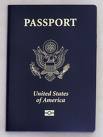
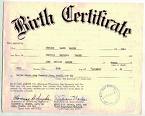
In part, the mailing said:
Under the mattress, inside shoeboxes and even in the garage are just a few of the places that people use to safeguard their personal documents — which perhaps explains why 30 percent of Americans have lost important papers….The survey asked respondents to list the most unusual place where important documents are hidden and found that 10 percent of Americans keep personal documents in an underwear drawer and six percent use shoeboxes. Respondents also listed kitchen cupboards, the garage and even under the mattress as a place to store personal papers.
Like my client with the baggied bug, when not entirely sure where papers should go, people tend to put things where they feel they will be kept safe (underwear drawers or under mattresses) or where they will be seen often enough (kitchen cabinets) to be remembered. Apparently the recent news story about the woman who lost her hidden-in-a-mattress life savings is not enough to dissuade people from valuing hidden over secure.
The survey found that upwards of 30% of Americans had reporting losing an “important document”, and acknowledged that replacing those documents took multiple days. Paper Doll has previously reported on the procedures for replacing lost vital documents, including birth certificates, Social Security cards and passports. If you’ve had to follow those steps, you can verify that it’s certainly easier to put a fool-proof system in place than to feel foolish, wasting time in-line or on the phone, trying to replace mortgage paperwork that you “just know is here somewhere”.
Smead’s survey asked people why they hadn’t gotten their important personal documents organized. A striking 40% of those surveyed mentioned that they lacked the time or were overwhelmed by the process of getting these documents organized. As any professional organizer, and anyone who has lived through a natural or other disaster, would be quick to tell those respondents, trying to recover from a catastrophe without easy access to one’s most important papers is much more overwhelming!
Survey respondents also told interviewers that not knowing what papers they could get rid of, and what was important to keep, prevented them from moving forward. (The anxiety over making a mistake on this front is easily solved with a records retention schedule or, ahem, my Do I Have To Keep This Piece of Paper?).
Another reason respondents gave for having no organizing system for their most important papers was that they simply didn’t know where to start. If only I had been able to piggyback on each of these survey questions, I’d have taken these people by the hand and assured them that it simply doesn’t matter where you start, as long as you get started, because you never know when you’ll have an urgent need for your vital documents.
Solutions
When they sent out their survey results, Smead presented their three-part approach to organizing vital papers, a philosophy with which I think all professional organizers would agree:
- Keep it Simple
- Keep it Safe
- Keep it Handy
Keeping it simple starts with…just getting started. Maybe you already know that your passport is in the bottom of your carry-on bag. Perhaps you’re pretty sure your firstborn’s Social Security card is paper-clipped to those little inky hospital-record footprints, tucked in the bottom of the long-unused changing table. If so, you’re ahead of the game.
However, if you’re just trying to imagine what documents are important, get a head start by making a list based the items discussed in these past posts:
Top 10 Vital Documents–Do You Know Where Your VIPs Are?
More VIPs–Very Important Papers Beyond The Top 10
I Fought The Law…and the Paperwork Won
Once you’ve made your list, visit all the usual suspect venues in your home until you’ve found as many VIPs as you can. When you’ve given up on locating something apparently lost, or realize there’s a document you never actually had, set about acquiring replacements. But you don’t need to wait until you have everything before you organize your documents.
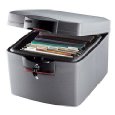
Keeping it safe means creating a home that will protect your VIPs from natural and other disasters, as well as from theft and even the prying eyes of snooping household visitors. Often, people think this means getting a bank safe deposit box, but that’s not necessarily the case. In times of natural disasters, banks are often closed or at least inaccessible at the very time you will need documentation for proof of identity, ownership, insurance, etc. If you do keep originals in the safe deposit box, be sure to have accessible photocopies, especially for insurance policies and property deeds, in your file system.
A fireproof, waterproof safe or file box, one designed specifically to hold hanging files, and preferably one that is light enough to carry, should be adequate to protect your most vital documents from the elements (and the bad guys).
Keeping it handy means that accessibility is key. If you create a fabulous file system for your reference files and vital documents, but bury it in the back of your closet so that you literally have to duck under old coats to retrieve files, you’re likely to find every excuse to avoid returning them once you’ve used them or filing newly-acquired vital documents. If the home for your VIPs is inconvenient, your passport probably won’t make it back home after a vacation, your Social Security card will languish on your desk after you’ve filed for benefits, and your kids’ birth certificates will stay piled up with the school registration paperwork.
Conversely, there are ways of keeping your documents a little too handy. I’ve seen people keep a desktop file box in the kitchen with all of their essential documents. Security issues aside, that might be fine if there’s a built-in desk area in a kitchen, but an open-top file box on or next to the stove, sitting out on the counter or balancing on a kitchen chair is an invitation to getting your vital documents overly toasted or soaked with Fruit-Loopy milk. Keep your file system somewhere far away from direct heat, moisture, the not-so-nimble fingers of toddlers (and their crayons) and family pets.
So…
- Collect your very important documents from the four corners of the Earth. (OK, from around your home, and perhaps your parents or in-laws’ home.)
- Review the lists provided above to make sure you haven’t missed anything vital.
- Label a few simple file folders
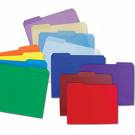 (or, if you’re super-short on time, just put them all in a Kraft envelope
(or, if you’re super-short on time, just put them all in a Kraft envelope 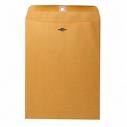 and label it Vital Documents).
and label it Vital Documents). - Create a designated home for your VIPs.
- Document (preferably in the computer) what records and paperes you own and where they’re located (so you won’t run to the bank when your passport is actually in your file box).
Share Your Story:
The survey results showed that most Americans rank their Social Security card as their most important personal document. The breakdown:
47% Social Security Card
22% Birth Certificates (their own and those of family members)
11% Ownership documents, including deeds, titles and stock certificates
10.5% Passport
9.9% Wills
Readers, what is your most important personal document? If missing, what VIP item would cause you the most distress? And perhaps, most importantly, do you know where that item is right now?
Do you have a fun story about losing (and hopefully finding) your papers, or about storing them in unusual places? Please share your tales in the comment section…once you’ve gone to check to make sure everything is where it should be.




Follow Me